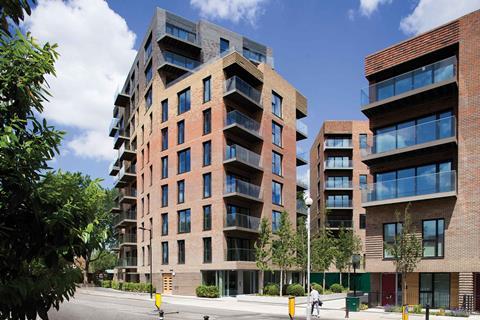Company’s design and technical boss says it is waiting for regulations to be clarified

Lendlease’s design and technical boss has said the firm is avoiding the use of cross-laminated timber (CLT) due to uncertainty in the building regulations.
Lucy Homer, Lendlease’s general manager for design and technical, said the firm – which built 2016 Stirling prize-shortlisted Trafalgar Place at Elephant and Castle (pictured) from CLT, told ��ɫ����TV: “We are not currently pursuing CLT projects. Technically it should still be feasible to use but from a risk perspective we have taken that decision.”
Homer said the company is waiting for the ��ɫ����TV Regulations to be clarified regarding the use of CLT in the wake of last year’s combustible materials ban.
Homer said the firm had not given up on the material and added: “We really do believe in it as a product from an innovation and sustainability perspective. The feeling of walking on site at a CLT project – the site somehow just feels cleaner and a better place to be.”
Also read: CLT - one-minute briefing
Also read: How is the CLT industry responding to the combustibles ban?
A spokesperson for L&G, which plans to develop a range of CLT buildings at its modular factory near Leeds, said: “CLT has, and continues to, meet the needs of our current product range, but as we look to develop new product typologies it is inevitable that we will introduce additional materials as appropriate.”
The use of CLT in the construction of external walls of buildings over 18m was in effect outlawed when the government revealed details of its combustible materials ban last November.
The amendment to Approved Document B ruled out the use of any material in an external wall that lacks one of the top combustibility ratings, A2-s1, d0 or Class A1, except for membranes, seals and gaskets.
The document defines an external wall as “anything located within any space forming part of the wall”.
The changes to both the Approved Document B and Section 7 of the ��ɫ����TV Regulations not only cover residential towers that rise more than 18m above ground but will also need to be adhered to by those building student accommodation, care homes, sheltered housing, hospitals and dormitories in boarding schools.




























No comments yet